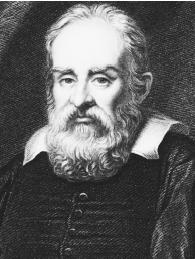Temperature and Heat - How it works
Energy
The area of physics known as thermodynamics, discussed briefly below in terms of thermodynamics laws, is the study of the relationships between heat, work, and energy. Work is defined as the exertion of force over a given distance to displace or move an object, and energy is the ability to accomplish work. Energy appears in numerous manifestations, including thermal energy, or the energy associated with heat.
Another type of energy—one of particular interest to chemists—is chemical energy, related to the forces that attract atoms to one another in chemical bonds. Hydrogen and oxygen atoms in water, for instance, are joined by chemical bonding, and when those bonds are broken, the forces joining the atoms are released in the form of chemical energy. Another example of chemical energy release is combustion, whereby chemical bonds in fuel, as well as in oxygen molecules, are broken and new chemical bonds are formed. The total energy in the newly formed chemical bonds is less than the energy of the original bonds, but the energy that makes up the difference is not lost; it has simply been released.
Energy, in fact, is never lost: a fundamental law of the universe is the conservation of energy, which states that in a system isolated from all other outside factors, the total amount of energy remains the same, though transformations of energy from one form to another take place. When a fire burns, then, some chemical energy is turned into thermal energy. Similar transformations occur between these and other manifestations of energy, including electrical and magnetic (sometimes these two are combined as electromagnetic energy), sound, and nuclear energy. If a chemical reaction makes a noise, for instance, some of the energy in the substances being mixed has been dissipated to make that sound. The overall energy that existed before the reaction will be the same as before; however, the energy will not necessarily be in the same place as before.
Note that chemical and other forms of energy are described as "manifestations," rather than "types," of energy. In fact, all of these can be described in terms of two basic types of energy: kinetic energy, or the energy associated with movement, and potential energy, or the energy associated with position. The two are inversely related: thus, if a spring is pulled back to its maximum point of tension, its potential energy is

Heat
Thermal energy is actually a form of kinetic energy generated by the movement of particles at the atomic or molecular level: the greater the movement of these particles, the greater the thermal energy. When people use the word "heat" in ordinary language, what they are really referring to is "the quality of hotness"—that is, the thermal energy internal to a system. In scientific terms, however, heat is internal thermal energy that flows from one body of matter to another—or, more specifically, from a system at a higher temperature to one at a lower temperature.
Two systems at the same temperature are said to be in a state of thermal equilibrium. When this state exists, there is no exchange of heat. Though in everyday terms people speak of "heat" as an expression of relative warmth or coldness, in scientific terms, heat exists only in transfer between two systems. Furthermore, there can never be a transfer of "cold"; although coldness is a recognizable sensory experience in human life, in scientific terms, cold is simply the absence of heat.
If you grasp a snowball in your hand, the hand of course gets cold. The mind perceives this as a transfer of cold from the snowball, but in fact exactly the opposite has happened: heat has moved from your hand to the snow, and if enough heat enters the snowball, it will melt. At the same time, the departure of heat from your hand results in a loss of internal energy near the surface of the hand, experienced as a sensation of coldness.
Understanding Temperature
Just as heat does not mean the same thing in scientific terms as it does in ordinary language, so "temperature" requires a definition that sets it apart from its everyday meaning. Temperature may be defined as a measure of the average internal energy in a system. Two systems in a state of thermal equilibrium have the same temperature; on the other hand, differences in temperature determine the direction of internal energy flow between two systems where heat is being transferred.
This can be illustrated through an experience familiar to everyone: having one's temperature taken with a thermometer. If one has a fever, the mouth will be warmer than the thermometer, and therefore heat will be transferred to the thermometer from the mouth. The thermometer, discussed in more depth later in this essay, measures the temperature difference between itself and any object with which it is in contact.
Temperature and Thermodynamics
One might pour a kettle of boiling water into a cold bathtub to heat it up; or one might put an ice cube in a hot cup of coffee "to cool it down." In everyday experience, these seem like two very different events, but from the standpoint of thermodynamics, they are exactly the same. In both cases, a body of high temperature is placed in contact with a body of low temperature, and in both cases, heat passes from the high-temperature body to the low-temperature body.
The boiling water warms the tub of cool water, and due to the high ratio of cool water to boiling water in the bathtub, the boiling water

As for the coffee and the ice cube, what happens is opposite to the explanation ordinarily given. The ice does not "cool down" the coffee: the coffee warms up, and presumably melts, the ice. However, it expends at least some of its thermal energy in doing so, and, as a result, the coffee becomes cooler than it was.
THE LAWS OF THERMODYNAMICS.
These situations illustrate the second of the three laws of thermodynamics. Not only do these laws help to clarify the relationship between heat, temperature, and energy, but they also set limits on what can be accomplished in the world. Hence British writer and scientist C. P. Snow (1905-1980) once described the thermodynamics laws as a set of rules governing an impossible game.
The first law of thermodynamics is essentially the same as the conservation of energy: because the amount of energy in a system remains constant, it is impossible to perform work that results in an energy output greater than the energy input. It could be said that the conservation of energy shows that "the glass is half full": energy is never lost. By contrast, the first law of thermodynamics shows that "the glass is half empty": no system can ever produce more energy than was put into it. Snow therefore summed up the first law as stating that the game is impossible to win.
The second law of thermodynamics begins from the fact that the natural flow of heat is always from an area of higher temperature to an area of lower temperature—just as was shown in the bathtub and coffee cup examples above. Consequently, it is impossible for any system to take heat from a source and perform an equivalent amount of work: some of the heat will always be lost. In other words, no system can ever be perfectly efficient: there will always be a degree of breakdown, evidence of a natural tendency called entropy.
Snow summed up the second law of thermodynamics, sometimes called "the law of entropy," thus: not only is it impossible to win, it is impossible to break even. In effect, the second law compounds the "bad news" delivered by the first with some even worse news. Though it is true that energy is never lost, the energy available for work output will never be as great as the energy put into a system.
The third law of thermodynamics states that at the temperature of absolute zero—a phenomenon discussed later in this essay—entropy also approaches zero. This might seem to counteract the second law, but in fact the third states in effect that absolute zero is impossible to reach. The French physicist and engineer Sadi Carnot (1796-1832) had shown that a perfectly efficient engine is one whose lowest temperature was absolute zero; but the second law of thermodynamics shows that a perfectly efficient engine (or any other perfect system) cannot exist. Hence, as Snow observed, not only is it impossible to win or break even; it is impossible to get out of the game.
Comment about this article, ask questions, or add new information about this topic: